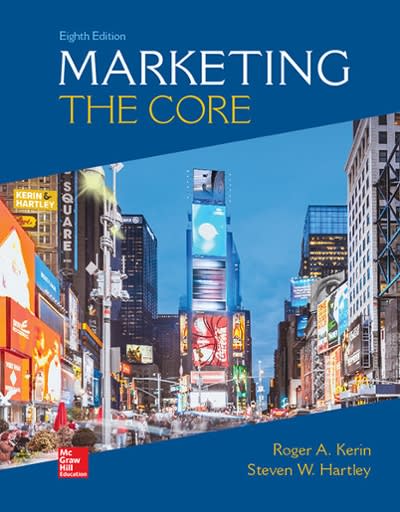Question
11 pts In going through life, you will continually face bottlenecks that constrain you from achieving your most-aggressive goals (whatever those goals may be). If
11 pts
In going through life, you will continually face "bottlenecks" that constrain you from achieving your most-aggressive goals (whatever those goals may be). If you were to model good operations practice, how would you approach this issue?
Group of answer choices
Find (identify) the bottleneck.
Recognize that when you alleviate a bottleneck, another will likely (invariably?) materialize.
Figure out how how to alleviate the bottleneck.
All the other answers are correct.
Flag question: Question 2Question 21 pts
When you "check out" with the cashier at a grocery store that has multiple cashiers, do you go to EACH cashier? Or only one cashier? You go to only one cashier. That is how we assume our system works (unless stated otherwise). When a job arrives ast any given stage (or step), it is processed by one and only one processor. The process time is the time it takes for that one processor to process one job. And we assume that all processors at that stage are equally-fast (they all take the same average process time).
Let's say it takes 4 minutes to check you out at that one cashier. Now if we add another cashier, does that mean you have to now go to that additional cashier as well? No, it means you still only go to the one cashier. That is how we assume our systems work. The process time does not change. It still only takes you 4 minutes at that one cashier. The second cashier is there to help the person behind you (or in front of you, or some other person).
If it takes a cashier 4 minutes to "check you out," then that cashier can "check out" 15 people per hour; one every 4 minutes. If you add another cashier, then we assume that extra cashier can also "check out" 15 people per hour. So if we have 2 cashiers then in total they can check out 30 people in an hour - that is their total capacity at the check-out station.
What is the utilization of a system in which customers arrive at the check out every 3 minutes on average, and a cashier takes 4 minutes to check out a person on average, and there are 2 cashiers?
Group of answer choices
67%
50%
75%
37.5%
Flag question: Question 3Question 31 pts
In a system with two subsequent stages, stage 1 has two processors, each with a capacity of 10 units per hour, and stage 2 has three processors, each with a capacity of 7 units per hour. Which of these two stages is the bottleneck?
Group of answer choices
Stage 1
Could be neither, depending on demand.
Could be either, depending on demand.
Stage 2
41 pts
What happens in a system in which the job arrival rate (R) exceeds the system capacity (m c)? (For example, a Professor sometimes comes across a student who represents such a system: the student is working full time, plus has responsibilities at home, plus is trying to take an overload of courses, plus pursues a social life.)
Group of answer choices
Eventually, either R will have to go down or (m c) will have to go up. For example, R goes down if some work just never gets done (the work effectively "reneges," leaving the system without getting processed). Or, for example, capacity is increased by "cutting corners" (i.e., by inappropriately reducing process time).
The implied utilization will be greater than 100%.
Absent a reduction in R or an increase in (m c), jobs will "back up" (a queue will form), resulting in lateness (excessive throughput time for a job).
All the other answers are correct.
Step by Step Solution
There are 3 Steps involved in it
Step: 1

Get Instant Access to Expert-Tailored Solutions
See step-by-step solutions with expert insights and AI powered tools for academic success
Step: 2

Step: 3

Ace Your Homework with AI
Get the answers you need in no time with our AI-driven, step-by-step assistance
Get Started


